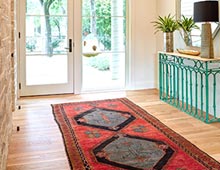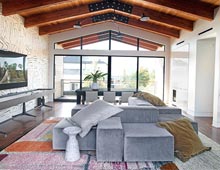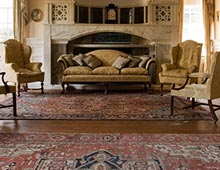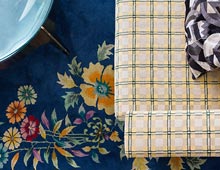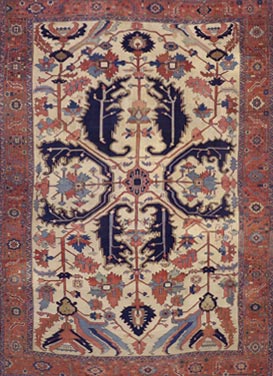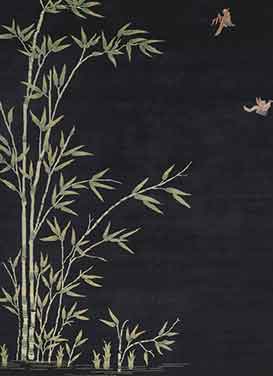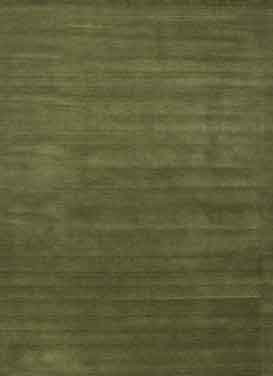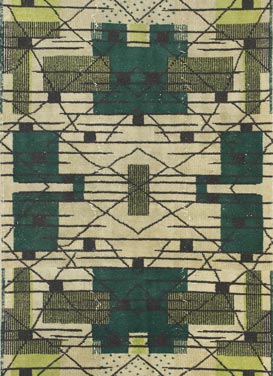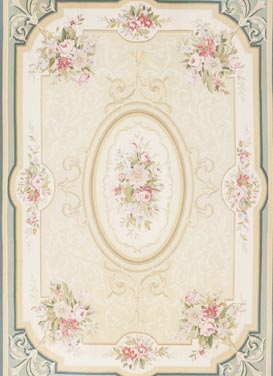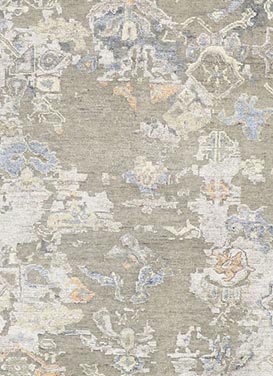- Inquiry
Description
79230 Late 19th Century Antique Persian Serapi Rug, 10'00 x 15'01.
Woven in the twilight of the 19th century, this hand-knotted wool antique Persian Serapi rug is a masterwork of elemental elegance and bold, poetic geometry. At its heart lies a grand lobed octofoil medallion, symmetrically composed with eight pronounced points and crowned by a central rosette in the center. The medallion blooms outward in a symphony of angular botanical motifs and abstracted, symbolic forms, its language both ancient and remarkably fresh. It is anchored with flaming palmette pendants at either end, emblems of transformation and vitality, casting their visual flame across the red field. An intricate rectilinear ivory outline of stylized frondescence frames the medallion with stately ornamentation, giving structure to the otherwise lyrical flow of the design.
The vibrant abrashed red field serves as the theatrical stage upon which an allover garden unfurls—blooming palmettes, celestial lotus blossoms, sharp-edged saz leaves, cloudband motifs, and angular vinery interlace with rhythmic purpose. Stylized florals and sinuous foliage drift across the surface, some rooted in the tribal memory, others recalling the classical grandeur of Safavid court carpets. The design is open yet dense, free yet measured—a perfect fusion of spontaneity and symmetry. Each motif is rendered in harmonious hues of reds, pinks, navy blue and sky blue, earthy browns, and soft ivory, a palette drawn from mountain roots, mineral wells, and the highland sun. The mesmerizing corner spandrels, dramatically outlined and filled with angular vinery and stylized foliage, echo the botanical forms of the medallion in reverse symmetry. Their tri-colored ground brightens the composition, providing striking visual with the overall design. These spandrels act like beams of light radiating from the corners inward, framing the center with a sense of uplift and spatial expansion.
What sets this Serapi apart is its deft architectural framing. A classic Samovar turtle vine scroll border, rich with curling vines and stylized tortoise motifs, wraps the composition in rhythmic continuity. This main border rests on a lively red ground, its internal tempo steady and deliberate, while an inner and outer floral meander guard band, rendered in sky blue, floats alongside with delicate grace. These guard bands soften the formality of the border, adding lyrical counterpoint and chromatic contrast that bring balance and cohesion to the visual whole.
Every inch of this Serapi rug tells a story of intention and improvisation. The serrated leaves pulse like flame, the medallion stretches like a blossom at full bloom, and the borders dance with old-world rhythm. The composition reveals the hand of a weaver who honored tradition while allowing for the unique expression of her vision—likely a woman from a mountainous village, guided by generations of oral design knowledge and the tactile intimacy of loom and wool. The irregularities, slight asymmetries, and idiosyncratic flourishes are the very hallmarks of authenticity, imbued with the soulful artistry that defines the best Serapi carpets of this era.
This Serapi rug is more than a floor covering—it is a cultural relic, a work of art, and a living archive of Persia’s artistic soul. Its Late 19th Century origin places it in the golden age of Serapi weaving, a time when these carpets were sought by Western tastemakers yet still borne of deeply rooted village traditions. Whether gracing a stately room or grounding a modern interior with historical depth, this Serapi invites contemplation and admiration. It is a rug that speaks in the language of beauty, memory, and timeless craftsmanship.
- Abrash. Age Wear.
- Hand knotted wool.
- Made in Iran.
- Measures: 10'00 x 15'01.
- Pile Height: 0.15 of an inch.
- Date: 1880's. Late 19th Century.

